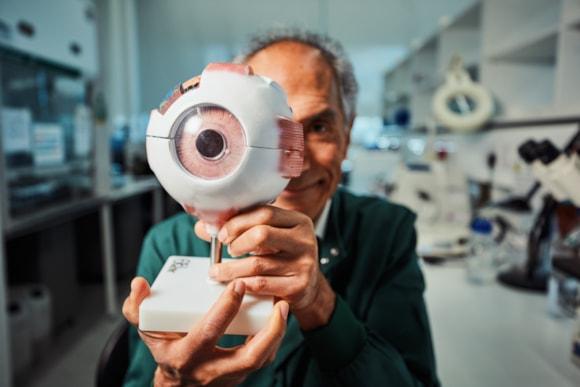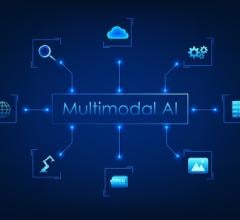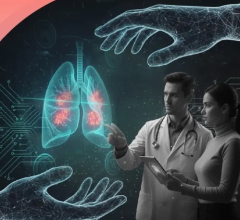
Jan. 21, 2025 — The NeurEYE research team, led by the University of Edinburgh, with Glasgow Caledonian University, has collected almost 1 million eye scans from opticians across Scotland, forming the world’s largest data set of its kind.
The scientists will then use artificial intelligence and machine learning to analyze the image data, linked to relevant patient data on demographics, treatment history and pre-existing conditions. This data is anonymized and patients can’t be identified, but it allows researchers to find patterns that could indicate a person’s risk of developing dementia, as well as giving a broad picture of brain health.
Permission to use the data comes from the Public Benefit and Privacy Panel for Health and Social Care, a part of NHS Scotland.
The project is the second funded and supported by NEURii, a global collaboration between the pharmaceutical company Eisai, Gates Ventures, the University of Edinburgh, the medical research charity LifeArc and the national health data science institute Health Data Research UK. Together, the partners are giving innovative digital projects the chance to become real world solutions that could benefit millions of patients with neurodegenerative conditions like dementia. The first NEURii project, SCAN-DAN, is using brain scans and AI to predict dementia risk.
Retired mechanical engineer, David Steele, 65, whose mother has Alzheimer’s, said predictive software like this could have saved his family 10 years of heartache and struggle. He said:“It took ten years for my mum to be diagnosed with Alzheimer’s. She was initially diagnosed with dry macular degeneration, but this masked the underlying issue that we now know to be cerebral blindness linked to Alzheimer’s. The connection between brain and eye was the missing link in her case.
“The missing diagnosis meant that my late father, who was also elderly, cared for mum throughout a difficult period without knowing what was wrong. If we had known, then we would have had help with the additional and demanding support that became necessary. Preventing the cliff edge, when it becomes too late for the person to understand what is wrong with them, is so important.”
Professor of Clinical Ophthalmology at the University of Edinburgh and NeurEYE co-lead, Baljean Dhillon, said, “The eye can tell us far more than we thought possible. The blood vessels and neural pathways of retina and brain are intimately related. But, unlike the brain, we can see the retina with the simple, inexpensive equipment found in every high street in the UK and beyond.”
Optometrists, will be able to use the software subsequently developed as a predictive or diagnostic tool for conditions such as Alzheimer’s, as a triage tool to refer patients to secondary health services if signs of brain disease are spotted, and potentially as a way to monitor cognitive decline.
Optometrist Ian Cameron said, “Optometrists as primary carers is not a new thing, and in Scotland we’re becoming an increasingly allied part of the NHS. We see the same people year on year, whether they’re ill or not, we have all the right equipment, so it makes sense for us to be the GP of the eyes and monitor as much health as we can see. What is new is that, with AI, we can see even more, and that is extremely powerful.”
Identifying people at risk of dementia could also accelerate the development of new treatments by identifying those who are more likely to benefit from trials and enabling better monitoring of treatment responses.
Professor of Computational Medicine at the Usher Institute and NeurEYE co-lead Miguel Bernabeu said, “Recent advances in artificial Intelligence promise to revolutionize medical image interpretation and disease prediction. However, in order to develop algorithms that are equitable and unbiased, we need to train them on datasets that are representative of the whole population at risk. This dataset, along with decades-long research at University of Edinburgh into ethical AI, can bring a step change in early detection of dementia for all.”
Dr Dave Powell, Chief Scientific Officer at LifeArc, one of the NEURii collaborators, said “Harnessing the potential of digital innovations in this way could ultimately save the NHS more than £37 million a year because the hope is that it will speed up the diagnosis and treatment of neurodegenerative conditions like dementia. The UK, with its single healthcare provider, is also well placed to become a global leader in the development of new tests that use health data. This is why we are collaborating to advance promising digital health projects that have the potential to improve millions of lives.”
The data will be held safely in the Scottish National Safe Haven which provides a secure platform for the research use of NHS electronic data. This resource is commissioned by Public Health Scotland and hosted by the Edinburgh International Data Facility through EPCC at the University of Edinburgh.
Find out more on the EI website.


 December 09, 2025
December 09, 2025 








